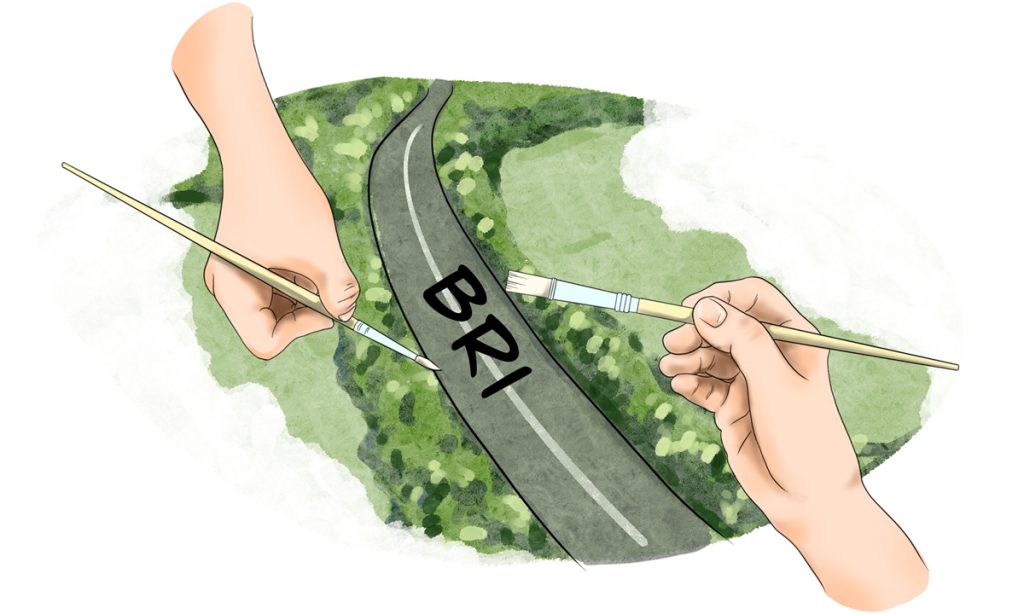This white paper is a collective report card of over 150 countries: Global Times editorial

On the occasion of the 10th anniversary of the Belt and Road Initiative(BRI), China's State Council Information Office released a White Paper titled "The Belt and Road Initiative: A Key Pillar of the Global Community of Shared Future" on October 10. The white paper comprehensively reviews and summarizes the development process of the BRI over the past 10 years, from its inception as a Chinese initiative to its international implementation, showcasing tangible achievements. It can be said that the white paper serves as both a report card for the past decade and a grand blueprint for the future of the Belt and Road cooperation.
From the visionary "freehand sketch" in its initial conception to the meticulous "fine brushwork" in its execution, the achievements of the BRI over the past 10 years have far exceeded the initial expectations. In terms of geographic scope, more than 150 countries and over 30 international organizations have joined the Belt and Road cooperation, encompassing over half of the world. In terms of the areas covered, it includes various fields such as economics, culture, and ecology.
Whether it's the "hard connectivity" of land roads and sea routes, the "soft connectivity" of cooperation in deepening rules and standards, or the "heart-to-heart connectivity" in fields like education, culture, sports, tourism, and archaeology, the BRI has woven a vast network of cooperation and mutual benefit across the globe. The white paper provides a wealth of data and examples that unquestionably demonstrate how the BRI has brought tangible benefits and dividends to the participating countries.
These achievements have been made step by step, inch by inch, by all participating countries. The BRI is a magnificent endeavor in the global concept and practice of shared development. It inevitably involves a process of continuous practical exploration, learning, summarizing, and adjustment. But even those who view the BRI through the thickest colored glasses cannot ignore or deny its influence.
If it weren't for the fact that the BRI aligns with the interests of all participating countries and even all of humanity, conforms to the laws of social development, and addresses the needs of the global economic market, it would never have come this far and wide. What exactly is the appeal of the BRI? The white paper provides a detailed and precise answer to this question through five comprehensive chapters spanning 28,000 words, which can be summarized as follows: The BRI has paved a new path for humanity to jointly achieve modernization.
To accomplish such a significant undertaking, hardships as well as twists and turns are foreseeable and inevitable. The future BRI cooperation is also unlikely to be smooth sailing, and will certainly face and overcome new difficulties, challenges, and even risks. However, with the foundation laid in the first decade, the consensus formed, and the accumulated experience, we have sufficient confidence in the increasing prosperity and broadening of BRI. In fact, the BRI cooperation has deeply embedded itself in the common destiny of humanity. In other words, the future of the BRI will reflect the common destiny of humanity.
Looking at the distribution of countries participating in the BRI, we can observe an interesting phenomenon. Developing countries hold a consistent positive attitude toward the BRI cooperation, while developed countries do not necessarily share the same sentiment. Of course, developing countries have heavier development tasks, but the BRI has never excluded any country and hopes for the participation of as many countries as possible, including developed ones.
The US also once showed interest in joining the BRI, but as the policy of containment toward China dominates in Washington, the US has instead poured cold water on and even undermined the BRI. At the same time, the US and Europe are both introducing alternative plans for BRI. From this perspective, imitation is actually the greatest affirmation. Although the BRI was proposed by China, once it was born and implemented, it belongs to the whole world, with extensive consultation, joint construction, and shared benefits. There is no need to divide it into different versions based on camps.
The future of BRI cooperation holds a lot of opportunities and requires more imagination, and it is also worth looking forward to. As the white paper points out, the BRI is a long-term, transnational and systematic global project of the 21st century and it has succeeded in taking its first step on a long journey. During these 10 years, the BRI has made many good friends around the world, and in the future, we look forward to more countries and regions joining in, making BRI cooperation a grand chorus for all of humanity.